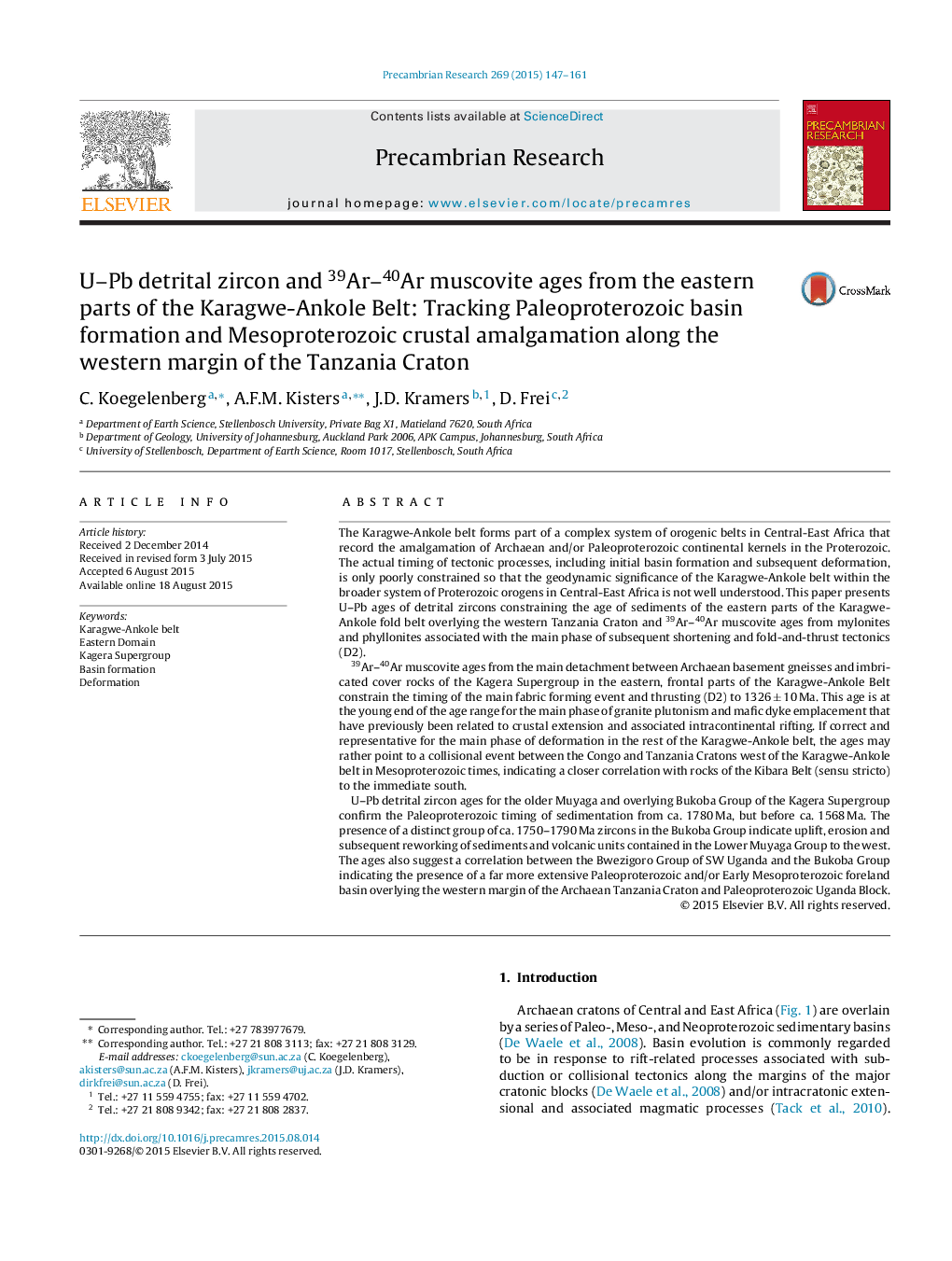| کد مقاله | کد نشریه | سال انتشار | مقاله انگلیسی | نسخه تمام متن |
|---|---|---|---|---|
| 4722575 | 1639606 | 2015 | 15 صفحه PDF | دانلود رایگان |

• D2 mylonites from the base of the Kagera Supergroup yield 39Ar–40Ar muscovite ages of ca. 1326 ± 10 Ma.
• D2 indicates a fold-and-thrust event in Karagwe-Ankole belt during the mid-Mesoproterozoic.
• Sedimentation of the Kagera Supergroup is recorded from 1780 Ma, but before 1568 Ma.
• The Bukoba Group records reworking of the Muyaga Group and basement into an extensive foreland system.
The Karagwe-Ankole belt forms part of a complex system of orogenic belts in Central-East Africa that record the amalgamation of Archaean and/or Paleoproterozoic continental kernels in the Proterozoic. The actual timing of tectonic processes, including initial basin formation and subsequent deformation, is only poorly constrained so that the geodynamic significance of the Karagwe-Ankole belt within the broader system of Proterozoic orogens in Central-East Africa is not well understood. This paper presents U–Pb ages of detrital zircons constraining the age of sediments of the eastern parts of the Karagwe-Ankole fold belt overlying the western Tanzania Craton and 39Ar–40Ar muscovite ages from mylonites and phyllonites associated with the main phase of subsequent shortening and fold-and-thrust tectonics (D2).39Ar–40Ar muscovite ages from the main detachment between Archaean basement gneisses and imbricated cover rocks of the Kagera Supergroup in the eastern, frontal parts of the Karagwe-Ankole Belt constrain the timing of the main fabric forming event and thrusting (D2) to 1326 ± 10 Ma. This age is at the young end of the age range for the main phase of granite plutonism and mafic dyke emplacement that have previously been related to crustal extension and associated intracontinental rifting. If correct and representative for the main phase of deformation in the rest of the Karagwe-Ankole belt, the ages may rather point to a collisional event between the Congo and Tanzania Cratons west of the Karagwe-Ankole belt in Mesoproterozoic times, indicating a closer correlation with rocks of the Kibara Belt (sensu stricto) to the immediate south.U–Pb detrital zircon ages for the older Muyaga and overlying Bukoba Group of the Kagera Supergroup confirm the Paleoproterozoic timing of sedimentation from ca. 1780 Ma, but before ca. 1568 Ma. The presence of a distinct group of ca. 1750–1790 Ma zircons in the Bukoba Group indicate uplift, erosion and subsequent reworking of sediments and volcanic units contained in the Lower Muyaga Group to the west. The ages also suggest a correlation between the Bwezigoro Group of SW Uganda and the Bukoba Group indicating the presence of a far more extensive Paleoproterozoic and/or Early Mesoproterozoic foreland basin overlying the western margin of the Archaean Tanzania Craton and Paleoproterozoic Uganda Block.
Journal: Precambrian Research - Volume 269, October 2015, Pages 147–161